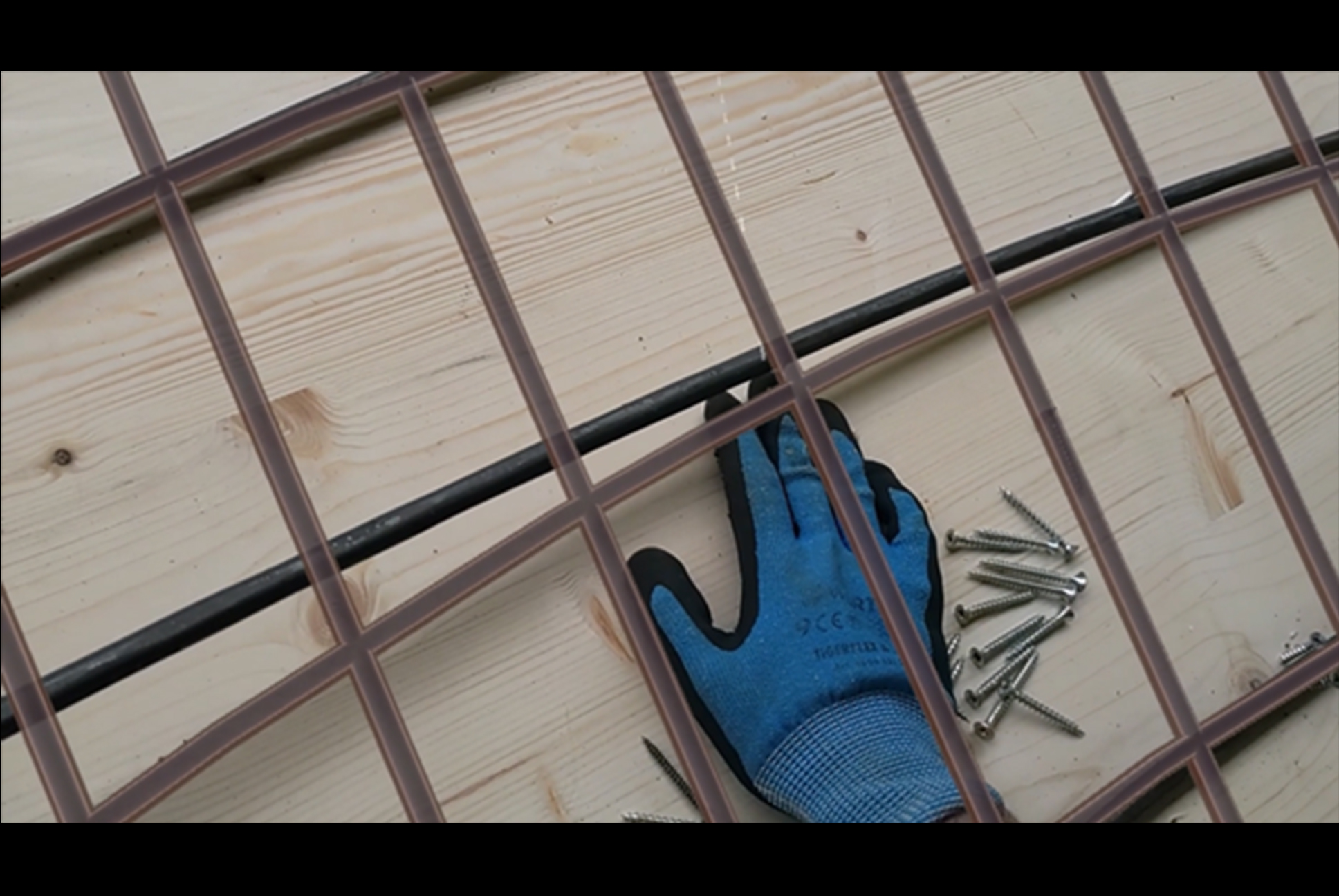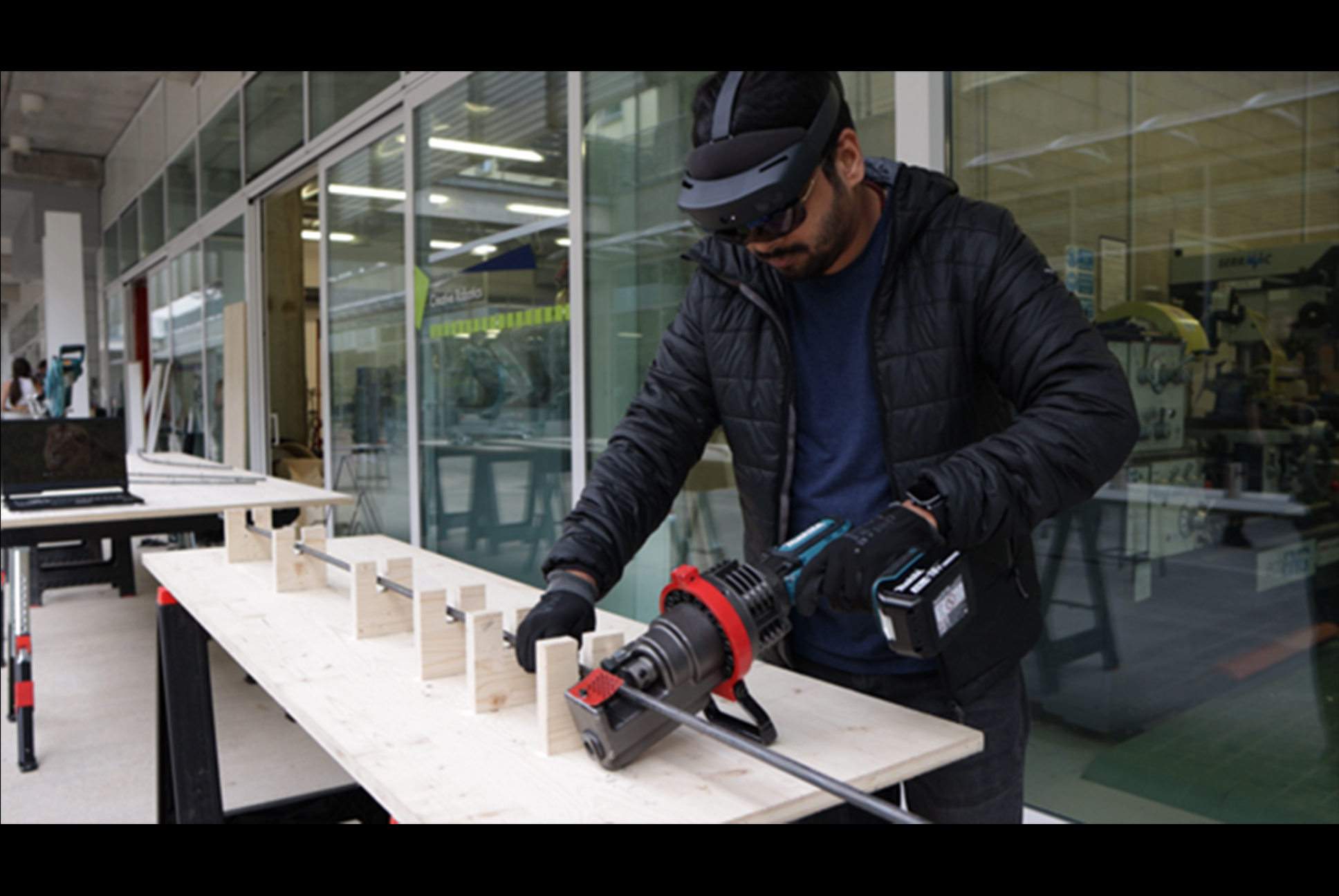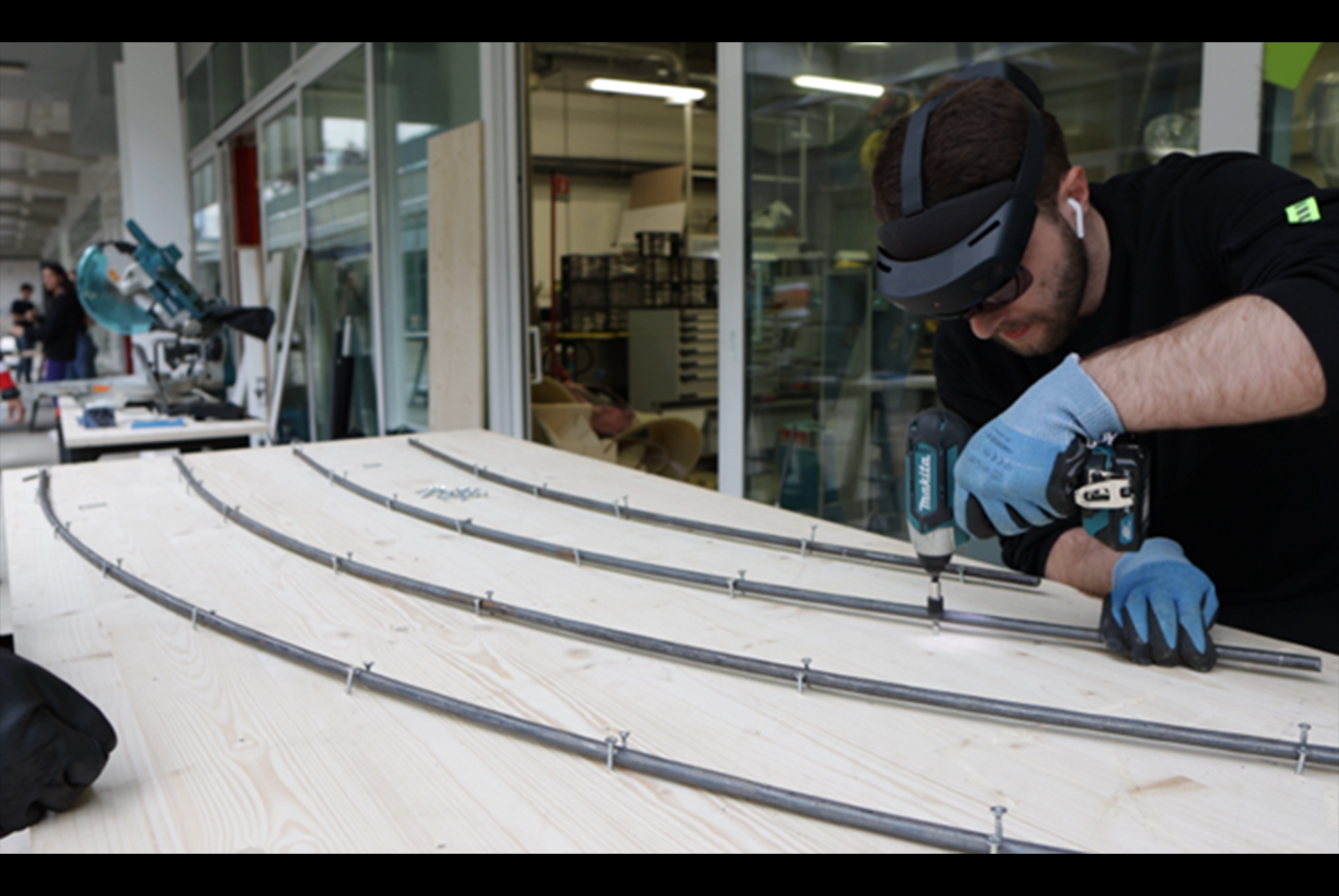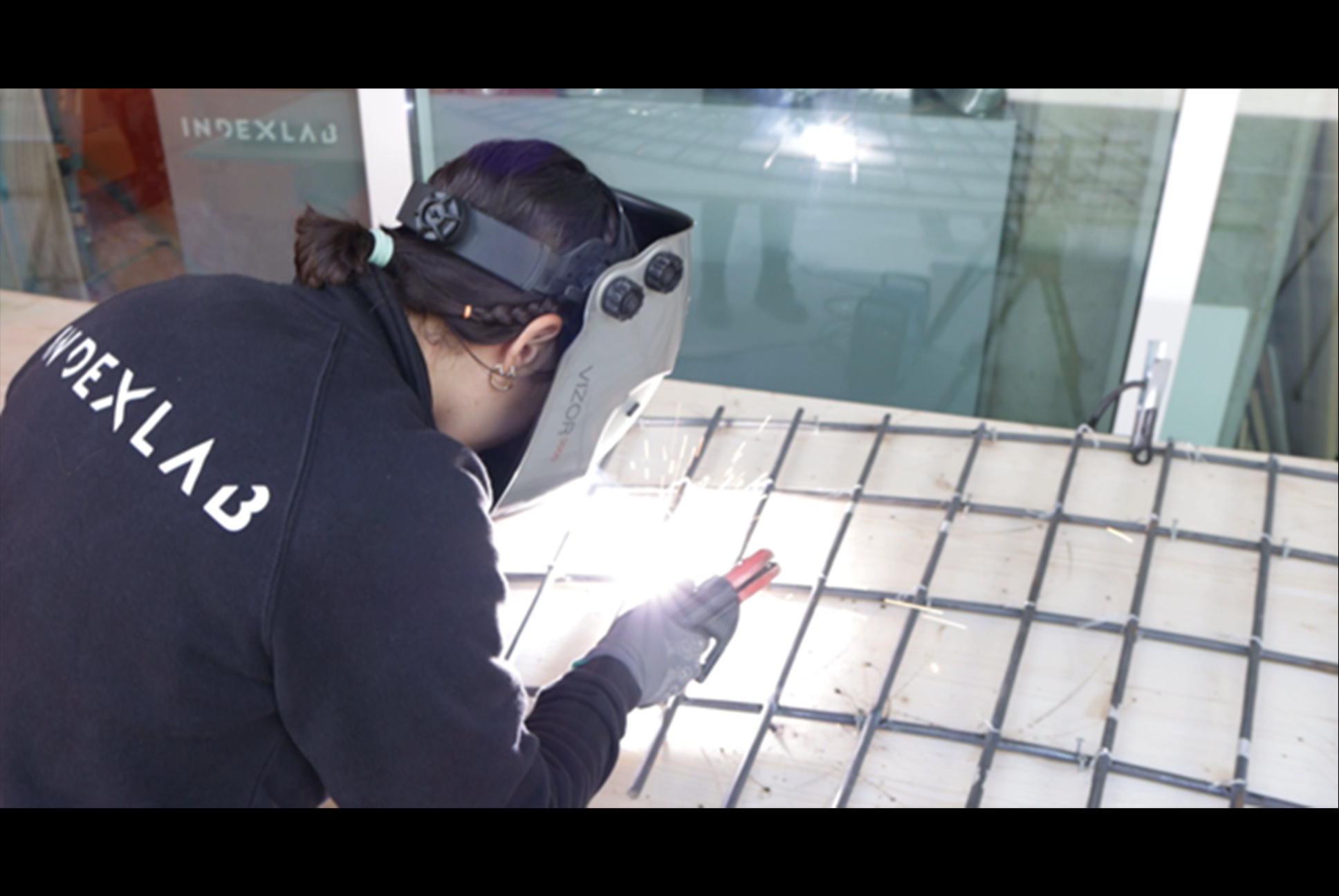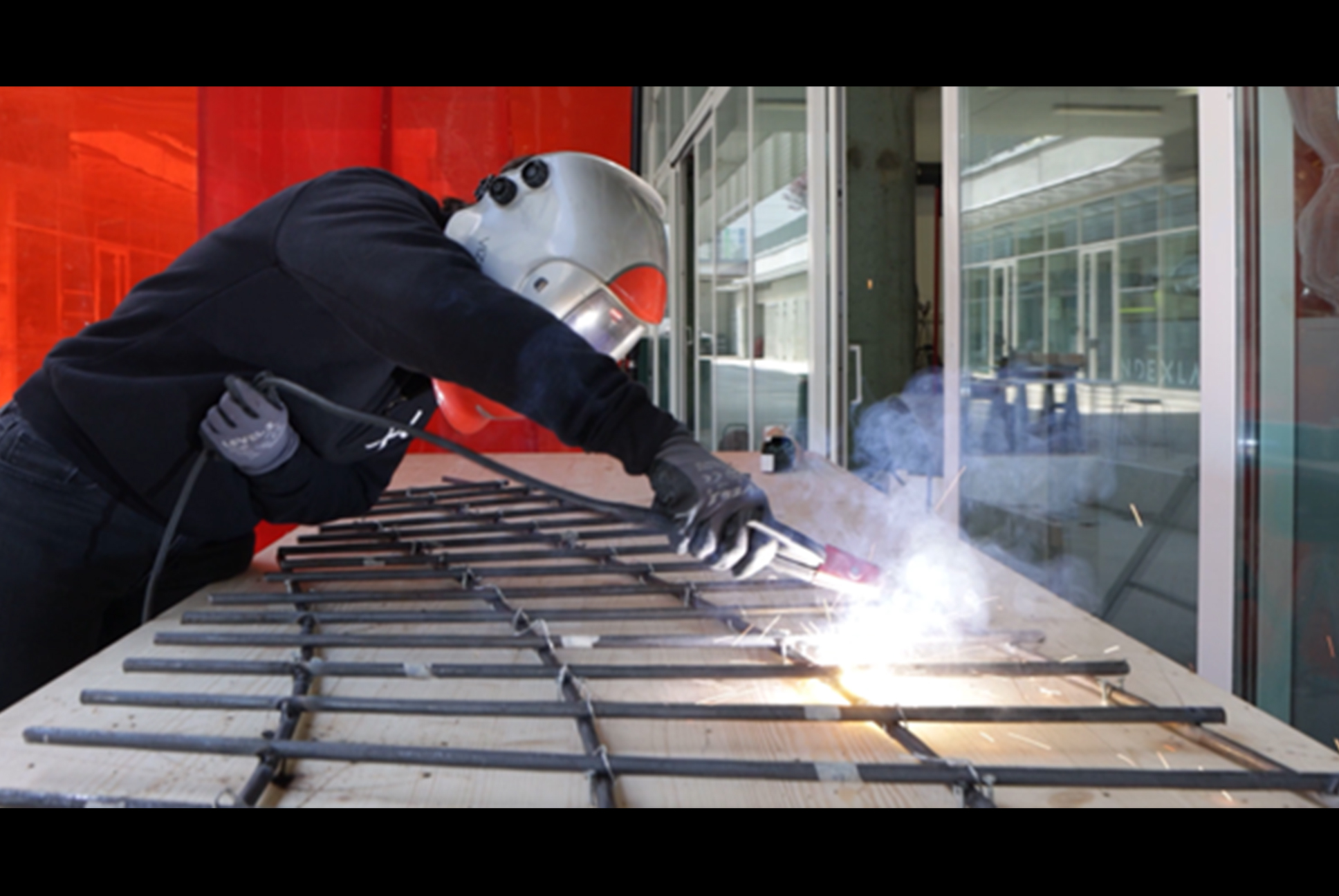HOLOREBAR
AR-guided fabrication of free-form rebar meshes for complex concrete reinforcement
This project explores the construction of free-form steel rebar meshes as reinforcement frameworks for non-standard concrete elements. The primary challenge lies in accurately bending, cutting, and assembling steel bars according to complex three-dimensional geometries. To address this, a digitally-augmented fabrication process is introduced, where construction workers use AR headsets to superimpose the digital model onto the physical workspace. This method allows workers to cut and bend bars on-site with millimeter precision, guided by a real-time overlay of the target geometry. The result is a fabrication process that does not require conventional drawings or formwork templates, enabling the rapid and reliable realization of complex reinforcement cages.
This project explores the construction of free-form steel rebar meshes as reinforcement frameworks for non-standard concrete elements. The primary challenge lies in accurately bending, cutting, and assembling steel bars according to complex three-dimensional geometries. To address this, a digitally-augmented fabrication process is introduced, where construction workers use AR headsets to superimpose the digital model onto the physical workspace. This method allows workers to cut and bend bars on-site with millimeter precision, guided by a real-time overlay of the target geometry. The result is a fabrication process that does not require conventional drawings or formwork templates, enabling the rapid and reliable realization of complex reinforcement cages.
A digital model of a free-form rebar mesh is first generated using parametric software. The structure is discretized into individual steel segments, each defined by its length, curvature, and connection points. Workers equipped with HoloLens headsets receive this information in real time: the digital geometry is overlaid on the physical workbench or installation site, allowing them to visualize the exact position and orientation of each bar.
Two fabrication strategies are implemented: cutting and bending. Steel bars are measured against the holographic projection and cut accordingly using rebar shears; bars are shaped using either a manual screw-based bending board or a fixed-radius bending machine, with AR overlays showing precise inflection points and curvature targets. After positioning, the bars are temporarily tied with wire and then permanently joined using electrode welding.
The AR-guided process enabled the successful fabrication of a complex mesh segment composed of 12 mm carbon steel rebars. Manual bending using AR-aligned screw guides produced smooth, custom curvature, outperforming constant-radius machine bends for irregular segments.
Welding secured the mesh in its post-elastic shape, counteracting material springback.
The full assembly was completed in 30% less time compared to conventional drawing-based methods, with no need for physical templates.
space
MATERIALS
Steel | Digital Materials
PROCESSES
Rebar Bending | Welding | Augmented Reality
DESIGNS
Tweening
space
ROLES
Indexlab prototyped and validated the Holorebar system, demonstrating how augmented reality (AR) technologies can streamline and accelerate the creation of complex reinforcement meshes. The system enables precise on-site fabrication without the need for traditional drawings or templates.
STAKEHOLDERS
LOCATION
INDEXLAB - Politecnico di Milano, Polo Territoriale di Lecco, Lecco, Italy
YEAR
2024
space
